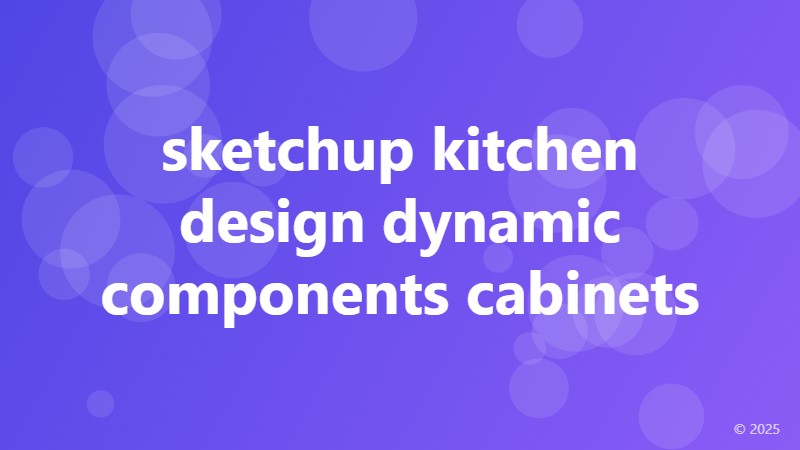sketchup kitchen design dynamic components cabinets

Revolutionizing Kitchen Design with SketchUp and Dynamic Components
When it comes to kitchen design, precision and attention to detail are paramount. With the advent of technology, designers and architects can now create stunning and functional kitchen spaces with ease. One such game-changer is SketchUp, a popular 3D modeling software that has taken the design world by storm. In this article, we'll delve into the world of SketchUp kitchen design, focusing on the power of dynamic components and cabinets.
What are Dynamic Components in SketchUp?
In SketchUp, dynamic components are intelligent, modular elements that can be used to create complex designs with ease. These components are designed to be flexible and adaptable, allowing users to customize and manipulate them to suit their needs. In the context of kitchen design, dynamic components can be used to create custom cabinetry, countertops, and appliances, giving designers unparalleled control over their creations.
The Benefits of Using Dynamic Components for Kitchen Cabinets
So, why are dynamic components a game-changer for kitchen design? For starters, they allow designers to create bespoke cabinetry that fits perfectly into any kitchen space. With dynamic components, users can easily modify the size, shape, and style of their cabinets to suit their client's needs. This level of customization is unparalleled in traditional design software, making SketchUp the go-to choice for designers who value precision and flexibility.
Another significant advantage of using dynamic components for kitchen cabinets is the ability to create complex designs quickly and efficiently. With SketchUp, designers can create intricate cabinetry systems in a matter of minutes, complete with custom hinges, handles, and finishes. This saves time and reduces the risk of errors, allowing designers to focus on what matters most – creating stunning kitchen spaces that exceed their clients' expectations.
Designing with Cabinets in SketchUp: A Step-by-Step Guide
So, how do you get started with designing kitchen cabinets using SketchUp's dynamic components? Here's a step-by-step guide to get you started:
Step 1: Create a new component by selecting the "Components" tab in your SketchUp toolbar and clicking "Create Component."
Step 2: Use the "Rectangle" tool to draw the basic shape of your cabinet. You can then add doors, drawers, and other features using SketchUp's intuitive tools.
Step 3: Use the "Dynamic Component" feature to add custom attributes to your cabinet, such as size, material, and finish. This will allow you to easily modify your design later on.
Step 4: Add your cabinet to your kitchen design by selecting the "Insert" tab and clicking "Component." You can then place your cabinet in your design, adjusting its size and position as needed.
Conclusion
In conclusion, SketchUp's dynamic components have revolutionized the world of kitchen design, offering designers unparalleled control and flexibility when it comes to creating custom cabinetry. By harnessing the power of dynamic components, designers can create stunning, functional kitchen spaces that exceed their clients' expectations. Whether you're a seasoned designer or just starting out, SketchUp's dynamic components are an essential tool in your kitchen design arsenal.